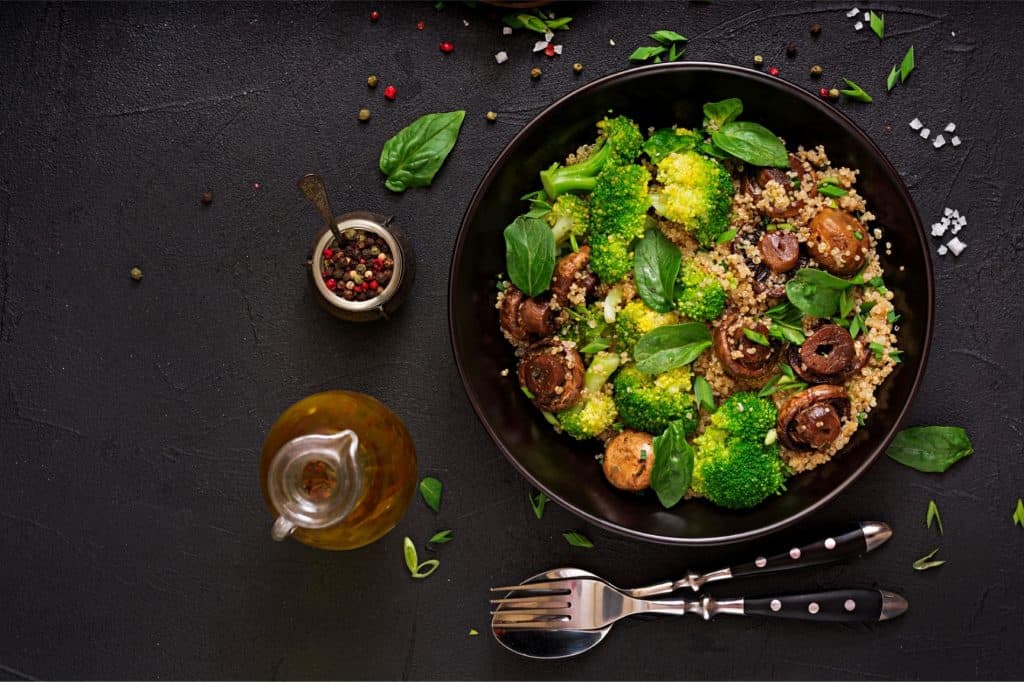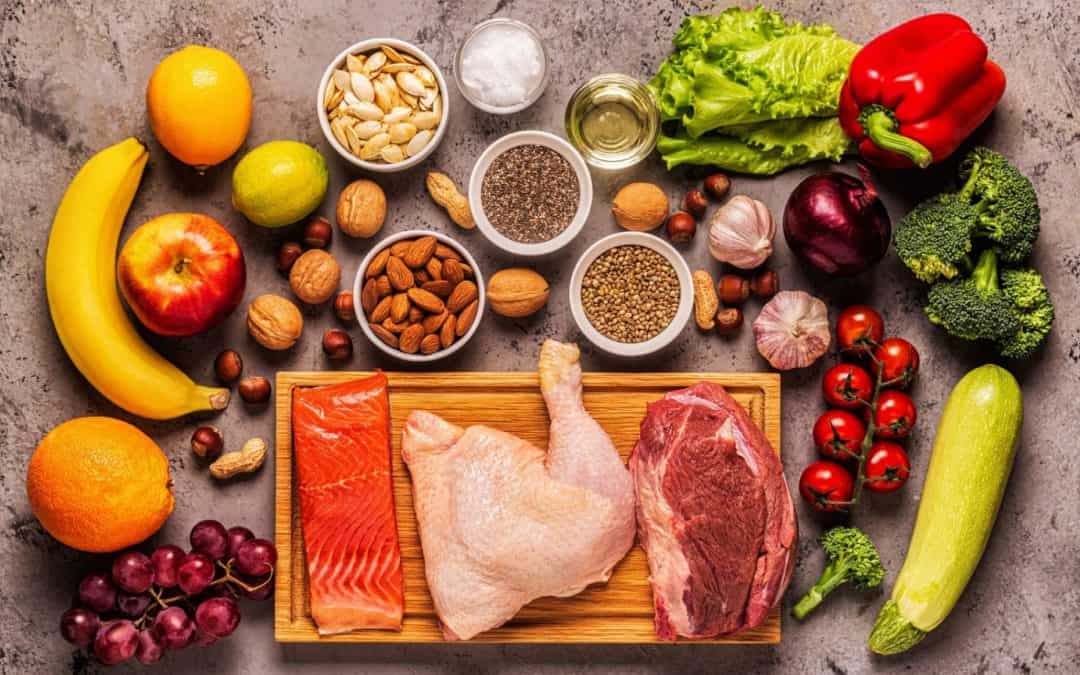Paleo and vegan diet: two diet plans you might think of as the total opposite of one another. Although both have proven to offer multiple benefits to your body including weight loss, lower cholesterol, and even reverse diabetes, these two modern fad diet plans each consist of very opposing food groups. In the paleo diet( Paleolithic diet), also known as the caveman diet or stone-age diet, its followers only consume meat, fish, vegetables, fruit, and eggs. The food they thought to be mirroring the hunter-gatherer arrangement of our ancestors in the Paleolithic era. This diet avoids dairy products, processed foods, legumes, grains, vegetables, nuts, and seeds. On the other hand, veganism and its followers practice avoiding animal products in their diet, only consuming vegetables, fruits, nuts and seeds, and grains, and only sticking to plant-based products. They avoid cruelty and exploitation of all animals, thus the idea of prohibiting anything that comes from them.
Now, what if we combine these two opposing diet plans and make one plan that would offer doubled benefits to your health? This was exactly what Dr. Mark Hyman thought of when he founded the Pegan diet.
Dr. Hyman is the director of the Cleveland Clinic Center for Functional Medicine and a New York Times best-selling author, with a forthcoming book, “The Blood Sugar Solution 10-Day Detox Cookbook (March 2015). And yes, he coined the term “pegan”, a portmanteau of “paleo” and “vegan”.
According to him, “Although they might sound completely at odds, the truth is Paleo and vegan diets have more in common with each other than either have the standard American diet.”
Dr. Hyman further explains that “The foundational principles of both diets—real whole, fresh food in its natural state free of processed ingredients, refined carbohydrates, and additives—are the same.”
According to Dr. Hyman in a talk with RedBook in 2015, “Designed correctly, both a Paleo and vegan diet can provide health benefits like weight loss, lowered cholesterol, and reverse diabetes.”
There are a few characteristics both paleo and vegan diets share in common. One, according to Dr. Hyman, is that they both have a low glycemic level:
- Low in pesticides, hormones, and antibiotics
- Low in refined carbohydrates, sugar, and flour
- High in good fats coming from nuts, seeds, avocados, and olive oil
Both diets prohibit the consumption of chemicals, sweeteners, and additives. They are also high in protein which is good for muscle synthesis and appetite control.
What are the things you can and can’t eat on a Pegan diet?

75% of the Pegan diet should consist of vegetables, fruit, plant-based foods, or nuts (bear in mind that everything listed below has a glycemic index of between 55 and 69). This could include:
- Turnip, mustard, spinach, and various other greens
- Cauliflower
- Broccoli
- Bamboo shoots
- Leeks
- Mushrooms
- Peppers
- Eggplants
- Fruits with the same glycemic index such as mangoes, berries, pineapple, cherries, apples, pears, etc.
- Omega-3 fats rich food such as avocados, olive oil, nuts
25% of the Pegan diet consists of meat, poultry, and fish. Sustainably sourced protein, as well as grass-fed, is what’s in favor. Choices are:
- Beef
- Chicken
- Turkey
- Salmon
- Eggs
- Shrimp
- Legumes such as beans (source of fiber, but should be limited in consumption)
- Natural sugars such as maple syrup, honey, dates, and coconut sugar
Just like any other diet plan, there are a few restrictions on a Pegan diet. They are:
- Dairy such as cow’s milk, cheese, and yogurt
- Gluten such as whole grain and other gluten-containing grains
- Starchy vegetables (avoiding starchy vegetables help minimize blood sugar response)
- Soy
- Vegetable oils such as canola, corn, sunflower, and soybean oil.
As aforementioned, the Pegan diet discourages the consumption of grain and only permits legume consumption in limitation for they can potentially influence blood sugar.
Only a half cup or 125 grams of grain is the suggested amount you should consume per meal and should not exceed. While only a cup or 75 grams of legume is the recommended amount for consumption per day.
You may consume other grains and legumes such as:
- Black rice, amaranth, millet, oats, and quinoa for grains
- Chickpeas, black beans, and pinto beans for legumes
Although, if you have diabetes or any other condition that has a connection to poor blood sugar control, you should avoid these altogether.
The pegan diet, an odd combination of two opposing diets, Paleo and vegan, has a number of beneficial contributions to your health. Having fruits and vegetables in this diet plan may perhaps be its best characteristic. As the majority component, fruits and vegetables are great sources of fiber, vitamins, minerals, and various plant compounds that are known to be preventative of diseases, lower oxidative stress and reduce inflammation. Pegan diet is also great for your heart, thanks to the healthy, unsaturated fats you can get from the fish, nuts, and seeds that may potentially have a positive impact on your overall heart health.
So if you are thinking about trying out Peganism, or even fully converting your lifestyle into it, here are a few tenets to get the best out of both (Paleo and vegan in Peganism) worlds:
- Eat more vegetables.
As Peganism diet has consisted of 75% fruit and vegetables, you should fill up your plate with them. And according to Dr. Hyman, the deeper the color, the higher the phytonutrient content is, for better protection against diseases.
- Eat less meat.
Consisting of only 25% meat, Pegan diet should still be able to provide you with the protein your body needs.
- No dairy.
If there is one thing both ( Paleo and vegan) diets have right, it’s avoiding dairy. Dr. Hyman says, “While some people can tolerate it, recent research has shown that it can contribute to ailments such as obesity, diabetes, heart disease, and may increase (not decrease) the risk of osteoporosis.”
- Avoid gluten.
Dr. Hyman suggests that gluten should be avoided and not consumed unless on super special occasions and or as a treat. “Eat them sparingly. They still raise blood sugar and can trigger autoimmunity.” Dr. Hyman says.
- Choose sustainably raised and grass fed beef.
Containing vitamins A and D, as well as omega-3 fats, grass-fed beef is best for you. The nutrients it contains raise antioxidants in your body.
With the nutrients, you get from the veganism aspect of the diet, plus the protein and healthy fats you get from the Paleo side, Peganism is a great diet plan to keep your overall health at an optimum level. Although it is very demanding, at least the benefits you get from it are a lot more than what you get from any other diet. If you adhere to the rules of the Peagan diet, you will reap the benefits sooner than you expect.
Sources: https://www.redbookmag.com/body/healthy-eating/news/a19936/pegan-diet/ https://www.usatoday.com/story/life/2019/01/11/pegan-diet-paleo-vegan-next-big-diet-trend/2385966002/ https://www.delish.com/food/a25473477/pegan-diet-food-plan/ https://www.healthline.com/nutrition/pegan-diet#sample-menu
© 2016-2021 by DietFind.com, a LIVenture LLC.
All rights reserved. No part of this document may be reproduced or transmitted in any form or by any means,
electronic, mechanical, photocopying, recording, or otherwise, without prior written permission of LIVentures LLC.

